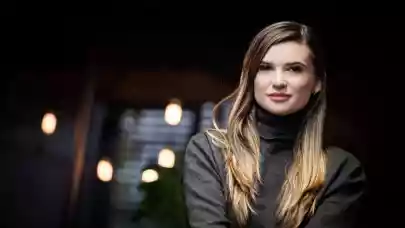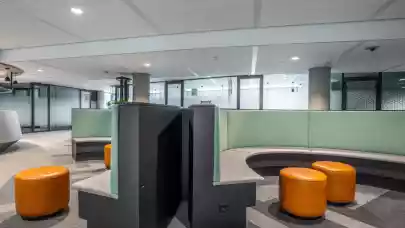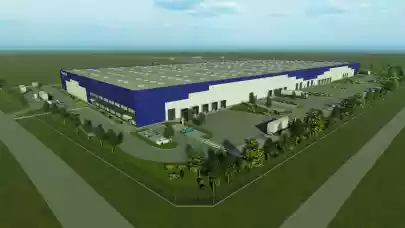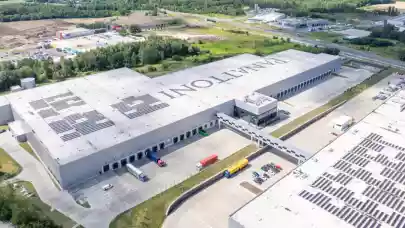
Dagmara Kowalik, CEO of Digital Bunch, a digital marketing agency specializing in 3D production and software, has talked to Property Forum about current trends in visual marketing of real estate and the next big things in it.
A popular Chinese adage says that 'one picture is worth more than a thousand words'. This statement in the case of real estate visualisation should be more like ten thousand words?
Architecture visualisations are indeed very special kinds of pictures. They’re not just about composition, contrast and colour. Like architecture itself, they have to be functional; explain the space well enough for people to understand it, convey a mood or emotion, tell a story and serve a specific purpose. To architects, drawing and sketching is so essential in the creative process because they get a better understanding of the space when it all comes to life and can improve it through rounds of iteration. We are very much involved in this process and, since we have more specialised tools to do so, we often create quick prototypes so that all stakeholders can see the designs very early in the process. Our role, however, doesn’t end there - we then create materials that attract the end user of the building. Creating a high-quality, photorealistic image is therefore a skilful balance of art, engineering, marketing, computer graphics and communication.

Dagmara Kowalik
CEO
Digital Bunch
What is the biggest challenge when developing visualisations for large real estate projects?
The biggest challenge is probably the fact that very often our task is to create one image that synthesises the work of a whole team of architects, engineers, consultants and stakeholders. What we create will be the first impression that people get when they judge the design and see the concept for the first time. Sometimes, it’s about showing the architecture in the right setting and trying to showcase the thought process behind it through different elements of the image. We only have seconds to make a good first impression. Sometimes, when a lot of compromises have to be made in the investment project, it’s made more difficult and it’s harder to bring out a certain degree of sophistication in the final images. Over years, however, we have learnt a few tricks that help us deal even with the most problematic cases.
Authors of real estate visualisations unfortunately sometimes 'embellish' reality, especially when it comes to the often unattractive or problematic neighbourhood of the projected buildings. Is it really impossible to avoid this?
You can’t escape from the fact that what we do is, technically, marketing and advertising. We’re expected to sell a vision, a dream. These kinds of situations definitely happen. I distinctly remember when at the beginning of our work we got a residential real estate project on the outskirts of the city and we were specifically asked to artificially zoom in on the Palace of Culture (a famous landmark in Warsaw’s city centre) on the horizon to make it seem closer. We are frequently asked to change the proportions of furniture to make an interior look bigger. It always left me feeling bad about the whole situation. With time, we have learnt to fight this and we have a much better way of dealing with it. We extensively talk to our clients about their strategy and their values. Based on the evidence, we already know that users and younger generations are more attracted to authenticity and value honesty in communication. If you’re creative, there’s always a bright side you can show without compromising on your values and integrity. If the neighbourhood is underdeveloped, maybe the architects have put more effort into creating a nice patio? Maybe there are big balconies we can show? The proximity of a school? Maybe it’s an up-and-coming area? I follow my philosophy: be creative and always focus on the good stuff. It goes a long way!
Virtual walk-throughs, drone videos or high-resolution animations are slowly becoming standard. What will be the next 'fashion shout' when it comes to visual property marketing?
The future is definitely interactive and customizable. You’ll be able to view more AR content in your AR headset or glasses, especially now that we’re waiting for Apple to release their hardware. These glasses will likely become the next big thing. We’ve seen some of it a while ago on Hololenses, but it was more of a marketing gimmick with not a lot of added value. Within the next few years, it’s likely to speed up and as a studio, we’re getting ready for that change. Customers will be able to more easily interact with models online, and configure their interiors or even whole houses. It’s already happening but it’s still something available to a few and in lower quality. Things are about to dramatically speed up in this area.
"Artificial intelligence" is a buzzword that has been conjugated up by all cases in the media recently. Do you make use of tools using this technology in the development of your visualisations?
Of course, if anyone thinks that their work won’t be affected by AI, they can think twice! We still think it has a long way to go to be able to take into account everything that we do in our whole creative process, but we’ve found it insanely inspiring. We use it to create storyboards faster, to create parts of an image that we can incorporate into our work, and to bounce some ideas off it as we would do with a new colleague at the office. It can be a bit awkward and maybe its jokes aren’t always as sassy as ours, but we’re getting to know each other and giving it more tasks to see what it’s good at and where it can bring value to both us and our customers. Some artists have decided to protest and practically ignore AI, but I think AI won’t replace artists. It’s humans using AI that will replace those who don’t. Or at least, they will have a significant competitive advantage.
Which property visualisations produced by your studio are you particularly proud of and why?
I particularly enjoy the animations that our studio is producing. I feel like we have more ways to express ourselves creatively when we add motion, control camera movements, animate people, build suspense, and add music. It’s also fun to collect references from films and edit the animations and since it’s a more complex process, it’s more satisfying to see the final result. People just get naturally more excited about animations. Time is another dimension that really helps us to add depth to our storytelling. Our portfolio of animations is really growing and becoming more versatile as we play with different techniques, and new software solutions, simultaneously digging deeper into the legacy of cinema and moving pictures.



